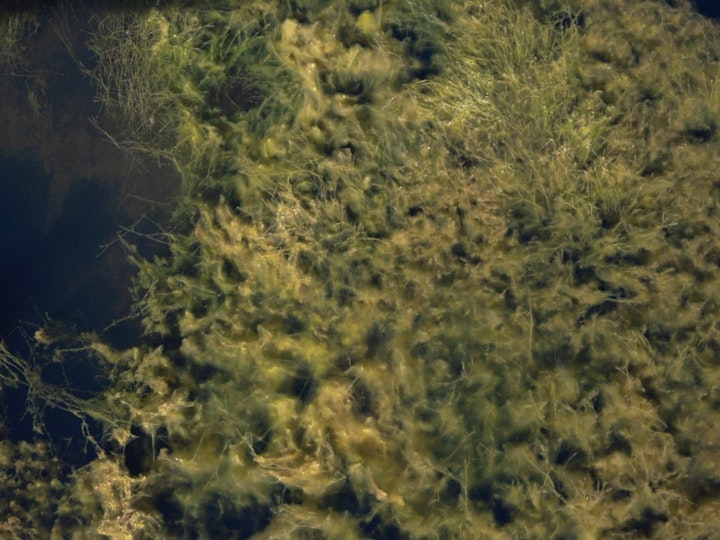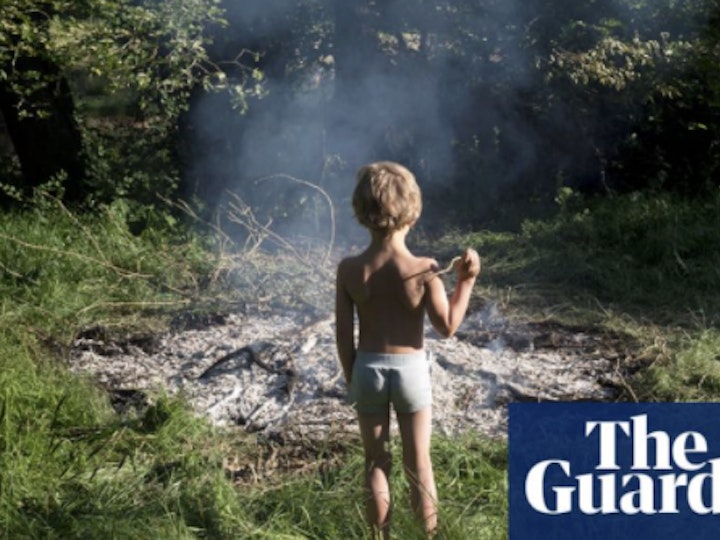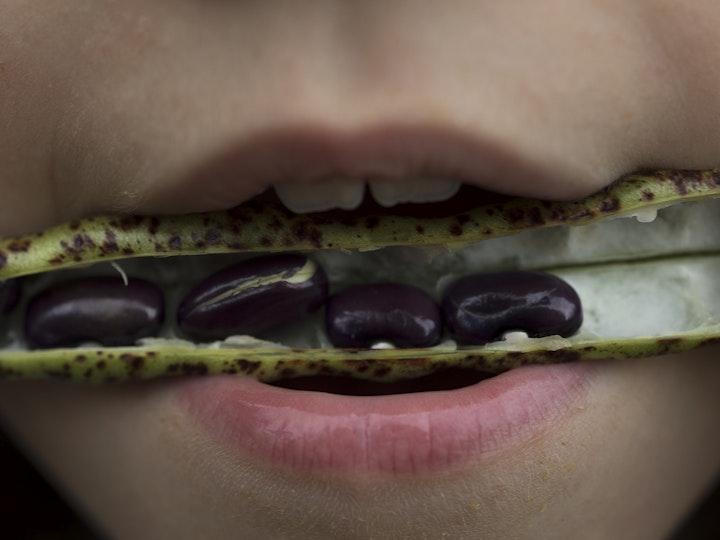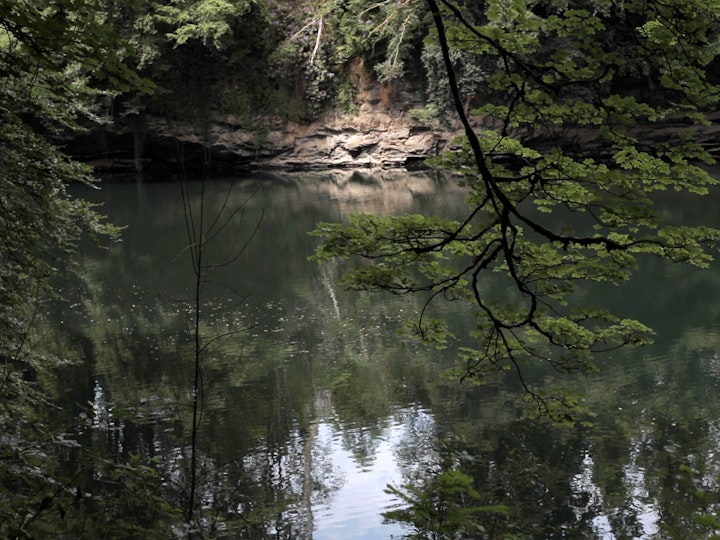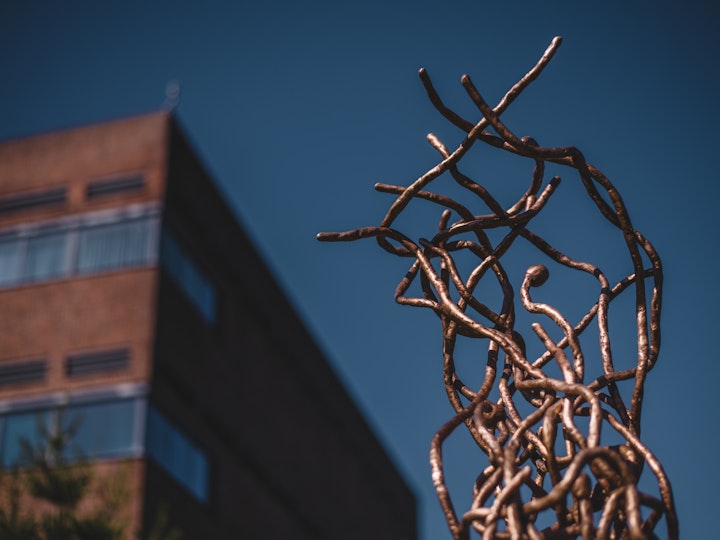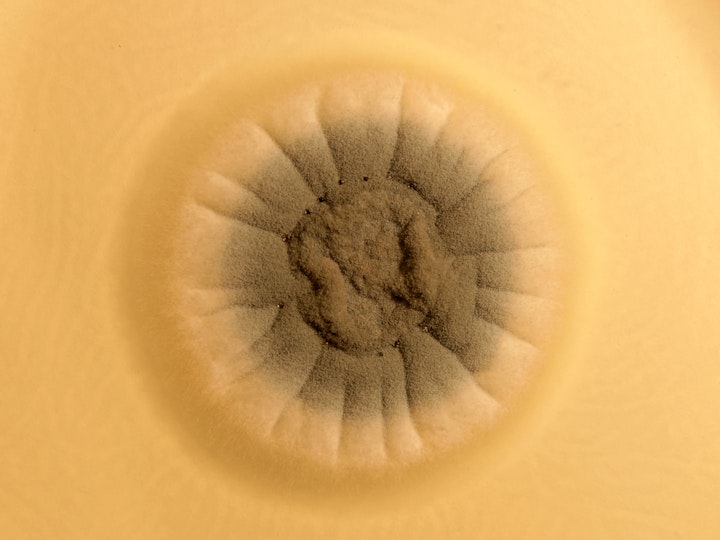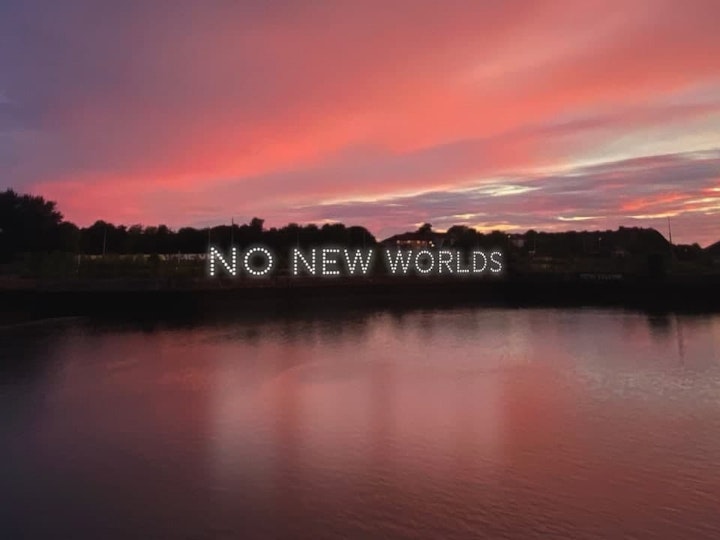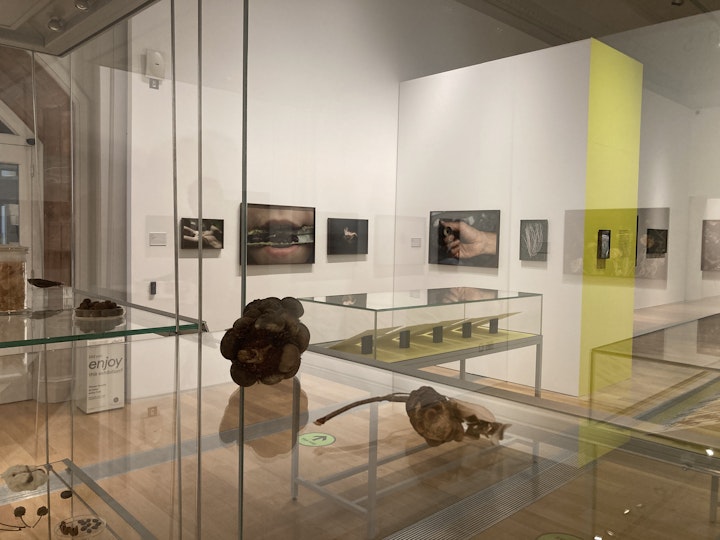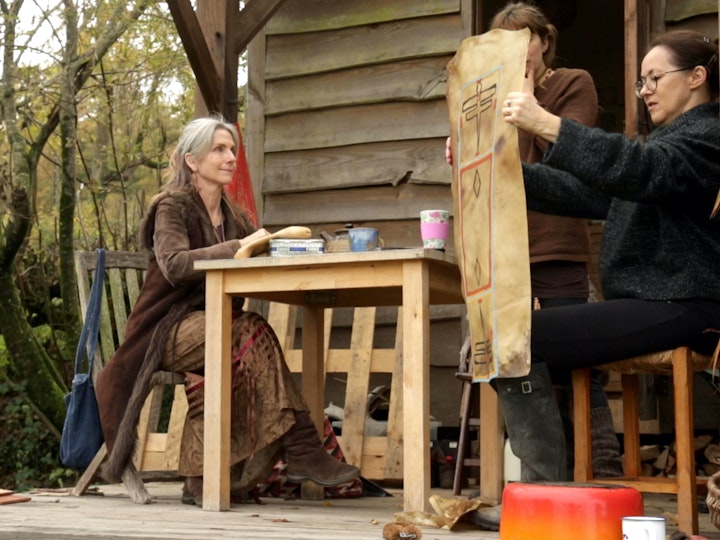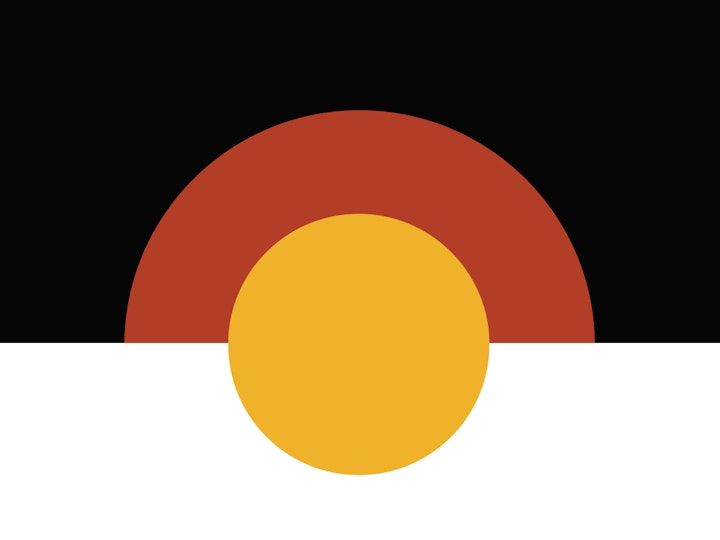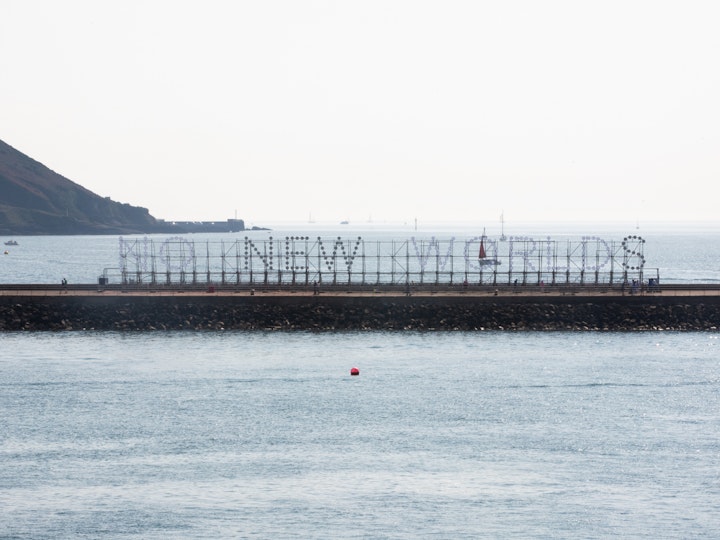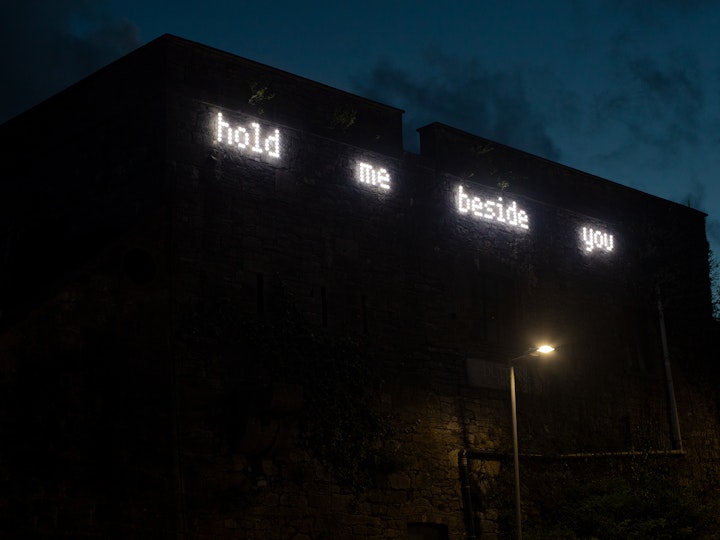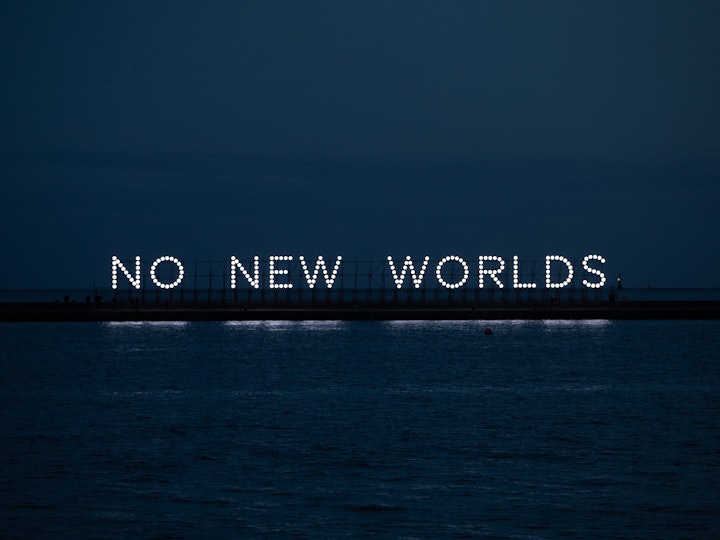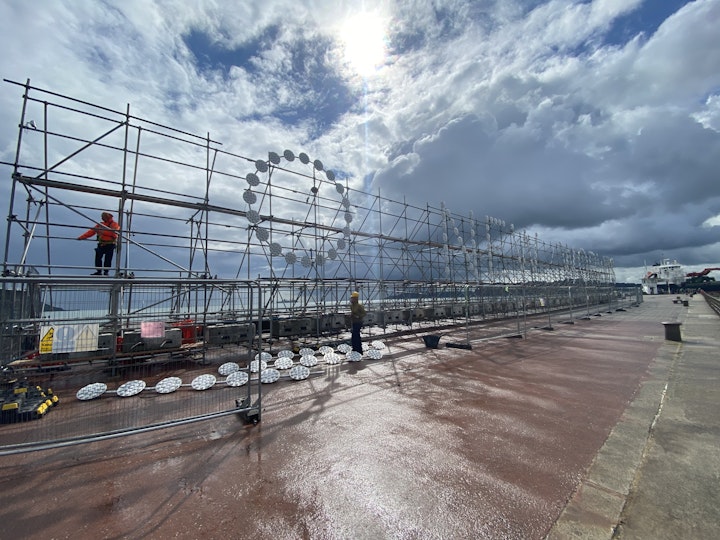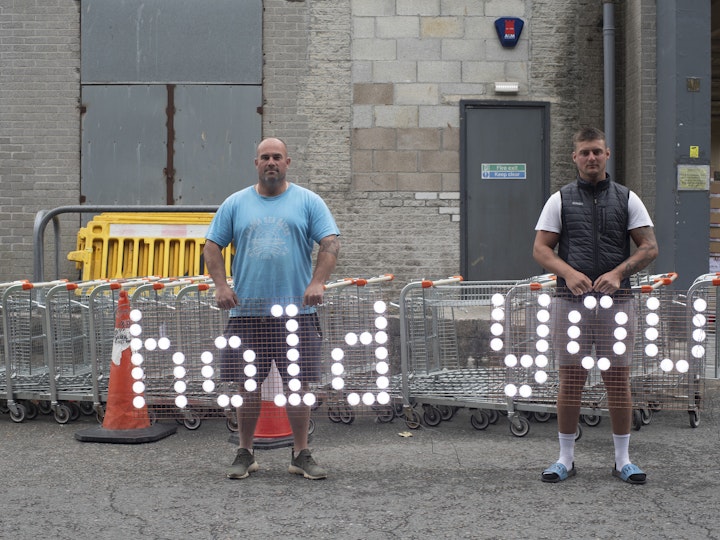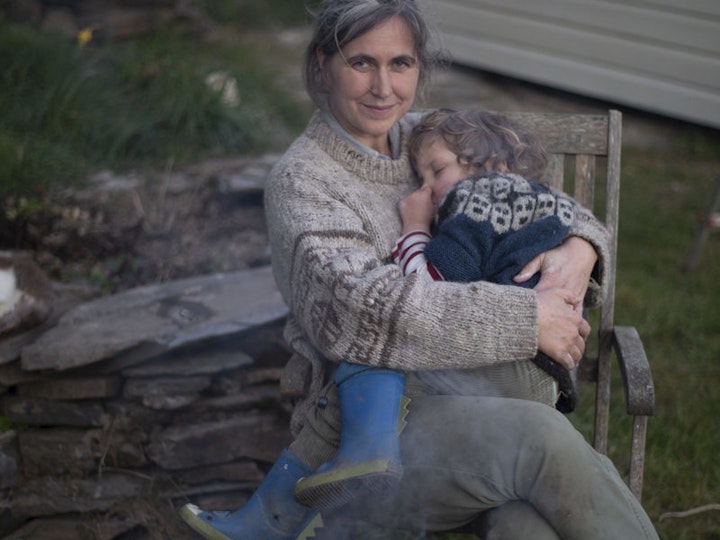The Carrier Bag Theory of Fiction
It is the story that makes the difference.
In the temperate and tropical regions where it appears that hominids evolved into human beings, the principal food of the species was vegetable. Sixty-five to eighty percent of what human beings ate in those regions in Paleolithic, Neolithic, and prehistoric times was gathered; only in the extreme Arctic was meat the staple food. The mammoth hunters spectacularly occupy the cave wall and the mind, but what we actually did to stay alive and fat was gather seeds, roots, sprouts, shoots, leaves, nuts, berries, fruits, and grains, adding bugs and mollusks and netting or snaring birds, fish, rats, rabbits, and other tuskless small fry to up the protein. And we didn't even work hard at it-- much less hard than peasants slaving in somebody else's field after agriculture was invented, much less hard than paid workers since civilization was invented. The average prehistoric person could make a nice living in about a fifteen-hour work week.
Fifteen hours a week for subsistence leaves a lot of time for other things. So much time that maybe the restless ones who didn't have a baby around to enliven their life, or skill in making or cooking or singing, or very interesting thoughts to think, decided to slope off and hunt mammoths. The skillful hunters then would come staggering back with a load of meat, a lot of ivory, and a story. It wasn't the meat that made the difference. It was the story.
It is hard to tell a really gripping tale of how I wrested a wild-oat seed from its husk, and then another, and then another, and then another, and then another, and then I scratched my gnat bites, and Ool said something funny, and we went to the creek and got a drink and watched newts for a while, and then I found another patch of oats.... No, it does not compare, it cannot compete with how I thrust my spear deep into the titanic hairy flank white Oob, impaled on one huge sweeping tusk, writhed screaming, and blood spouted everywhere in crimson torrents, and Boob was crushed to jelly when the mammoth fell on him as I shot my unerring arrow straight through eye to brain.
That story not only has Action, it has a Hero. Heroes are powerful. Before you know it, the men and women in the wild-oat patch and their kids and the skills of the makers and the thoughts of the thoughtful and the songs of the singers are all part of it, have all been pressed into service in the tale of the Hero. But it isn't their story. It's his. When she was planning the book that ended up as Three Guineas, Virginia Woolf wrote a heading in her notebook, "Glossary"; she had thought of reinventing English according to a new plan, in order to tell a different story. One of the entries in this glossary is heroism, defined as "botulism." And hero, in Woolf's dictionary, is "bottle." The hero as bottle, a stringent reevaluation. I now propose the bottle as hero.
Not just the bottle of gin or wine, but bottle in its older sense of container in general, a thing that holds something else.
If you haven't got something to put it in, food will escape you--even something as uncombative and unresourceful as an oat. You put as many as you can into your stomach while they are handy, that being the primary container; but what about tomorrow morning when you wake up and it's cold and raining and wouldn't it be good to have just a few handfuls of oats to chew on and give little Oom to make her shut up, but how do you get more than one stomachful and one handful home? So you get up and go to the damned soggy oat patch in the rain, and wouldn't it be a good thing if you had something to put Baby Oo Oo in so that you could pick the oats with both hands? A leaf a gourd a shell a net a bag a sling a sack a bottle a pot a box a container. A holder. A recipient.
The first cultural device was probably a recipient .... Many theorizers feel that the earliest cultural inventions must have been a container to hold gathered products and some kind of sling or net carrier.
So says Elizabeth Fisher in Women's Creation (McGraw-Hill, 1975). But no, this cannot be. Where is that wonderful, big, long, hard thing, a bone, I believe, that the Ape Man first bashed somebody with in the movie and then, grunting with ecstasy at having achieved the first proper murder, flung up into the sky, and whirling there it became a space ship thrusting its way into the cosmos to fertilize it and produce at the end of the movie a lovely fetus, a boy of course, drifting around the Milky Way without (oddly enough) any womb, any matrix at all? I don't know. I don't even care.
I'm not telling that story. We've heard it, we've all heard all about all the sticks spears and swords, the things to bash and poke and hit with, the long, hard things, but we have not heard about the thing to put things in, the container for the thing contained. That is a new story. That is news.
And yet old. Before-once you think about it, surely long before-the weapon, a late, luxurious, superfluous tool; long before the useful knife and ax; right along with the indispensable whacker, grinder, and digger- for what's the use of digging up a lot of potatoes if you have nothing to lug ones you can't eat home in-with or before the tool that forces energy outward, we made the tool that brings energy home. It makes sense to me. I am an adherent of what Fisher calls the Carrier Bag Theory of human evolution.
This theory not only explains large areas of theoretical obscurity and avoids large areas of theoretical nonsense (inhabited largely by tigers, foxes, other highly territorial mammals); it also grounds me, personally, in human culture in a way I never felt grounded before. So long as culture was explained as originating from and elaborating upon the use of long, hard objects for sticking, bashing, and killing, I never thought that I had, or wanted, any particular share in it. ("What Freud mistook for her lack of civilization is woman's lack of loyalty to civilization," Lillian Smith observed.) The society, the civilization they were talking about, these theoreticians, was evidently theirs; they owned it, they liked it; they were human, fully human, bashing, sticking, thrusting, killing. Wanting to be human too, I sought for evidence that I was; but if that's what it took, to make a weapon and kill with it, then evidently I was either extremely defective as a human being, or not human at all.
That's right, they said. What you are is a woman. Possibly not human at all, certainly defective. Now be quiet while we go on telling the Story of the Ascent of Man the Hero.
Go on, say I, wandering off towards the wild oats, with Oo Oo in the sling and little Oom carrying the basket. You just go on telling how the mammoth fell on Boob and how Cain fell on Abel and how the bomb fell on Nagasaki and how the burning jelly fell on the villagers and how the missiles will fall on the Evil Empire, and all the other steps in the Ascent of Man.
If it is a human thing to do to put something you want, because it's useful, edible, or beautiful, into a bag, or a basket, or a bit of rolled bark or leaf, or a net woven of your own hair, or what have you, and then take it home with you, home being another, larger kind of pouch or bag, a container for people, and then later on you take it out and eat it or share it or store it up for winter in a solider container or put it in the medicine bundle or the shrine or the museum, the holy place, the area that contains what is sacred, and then next day you probably do much the same again--if to do that is human, if that's what it takes, then I am a human being after all. Fully, freely, gladly, for the first time.
Not, let it be said at once, an unaggressive or uncombative human being. I am an aging, angry woman laying mightily about me with my handbag, fighting hoodlums off. However I don't, nor does anybody else, consider myself heroic for doing so. It's just one of those damned things you have to do in order to be able to go on gathering wild oats and telling stories.
It is the story that makes the difference. It is the story that hid my humanity from me, the story the mammoth hunters told about bashing, thrusting, raping, killing, about the Hero. The wonderful, poisonous story of Botulism. The killer story.
It sometimes seems that that story is approaching its end. Lest there be no more telling of stories at all, some of us out here in the wild oats, amid the alien corn, think we'd better start telling another one, which maybe people can go on with when the old one's finished. Maybe. The trouble is, we've all let ourselves become part of the killer story, and so we may get finished along with it. Hence it is with a certain feeling of urgency that I seek the nature, subject, words of the other story, the untold one, the life story.
It's unfamiliar, it doesn't come easily, thoughtlessly to the lips as the killer story does; but still, "untold" was an exaggeration. People have been telling the life story for ages, in all sorts of words and ways. Myths of creation and transformation, trickster stories, folktales, jokes, novels...
The novel is a fundamentally unheroic kind of story. Of course the Hero has frequently taken it over, that being his imperial nature and uncontrollable impulse, to take everything over and run it while making stern decrees and laws to control his uncontrollable impulse to kill it. So the Hero has decreed through his mouthpieces the Lawgivers, first, that the proper shape of the narrative is that of the arrow or spear, starting here and going straight there and THOK! hitting its mark (which drops dead); second, that the central concern of narrative, including the novel, is conflict; and third, that the story isn't any good if he isn't in it.
I differ with all of this. I would go so far as to say that the natural, proper, fitting shape of the novel might be that of a sack, a bag. A book holds words. Words hold things. They bear meanings. A novel is a medicine bundle, holding things in a particular, powerful relation to one another and to us.
One relationship among elements in the novel may well be that of conflict, but the reduction of narrative to conflict is absurd. (I have read a how-to-write manual that said, "A story should be seen as a battle," and went on about strategies, attacks, victory, etc.) Conflict, competition, stress, struggle, etc., within the narrative conceived as carrier bag/belly/box/house/medicine bundle, may be seen as necessary elements of a whole which itself cannot be characterized either as conflict or as harmony, since its purpose is neither resolution nor stasis but continuing process.
Finally, it's clear that the Hero does not look well in this bag. He needs a stage or a pedestal or a pinnacle. You put him in a bag and he looks like a rabbit, like a potato.
That is why I like novels: instead of heroes they have people in them.
So, when I came to write science-fiction novels, I came lugging this great heavy sack of stuff, my carrier bag full of wimps and klutzes, and tiny grains of things smaller than a mustard seed, and intricately woven nets which when laboriously unknotted are seen to contain one blue pebble, an imperturbably functioning chronometer telling the time on another world, and a mouse's skull; full of beginnings without ends, of initiations, of losses, of transformations and translations, and far more tricks than conflicts, far fewer triumphs than snares and delusions; full of space ships that get stuck, missions that fail, and people who don't understand. I said it was hard to make a gripping tale of how we wrested the wild oats from their husks, I didn't say it was impossible. Who ever said writing a novel was easy?
If science fiction is the mythology of modern technology, then its myth is tragic. "Technology," or "modern science" (using the words as they are usually used, in an unexamined shorthand standing for the "hard" sciences and high technology founded upon continuous economic growth), is a heroic undertaking, Herculean, Promethean, conceived as triumph, hence ultimately as tragedy. The fiction embodying this myth will be, and has been, triumphant (Man conquers earth, space, aliens, death, the future, etc.) and tragic (apocalypse, holocaust, then or now).
If, however, one avoids the linear, progressive, Time's- (killing)-arrow mode of the Techno-Heroic, and redefines technology and science as primarily cultural carrier bag rather than weapon of domination, one pleasant side effect is that science fiction can be seen as a far less rigid, narrow field, not necessarily Promethean or apocalyptic at all, and in fact less a mythological genre than a realistic one.
It is a strange realism, but it is a strange reality.
Science fiction properly conceived, like all serious fiction, however funny, is a way of trying to describe what is in fact going on, what people actually do and feel, how people relate to everything else in this vast sack, this belly of the universe, this womb of things to be and tomb of things that were, this unending story. In it, as in all fiction, there is room enough to keep even Man where he belongs, in his place in the scheme of things; there is time enough to gather plenty of wild oats and sow them too, and sing to little Oom, and listen to Ool's joke, and watch newts, and still the story isn't over. Still there are seeds to be gathered, and room in the bag of stars.
Ursula K. Le Guin, “The Carrier Bag Theory of Fiction,” in Dancing at the Edge of the World (New York: Grove Atlantic Press, 1989)
